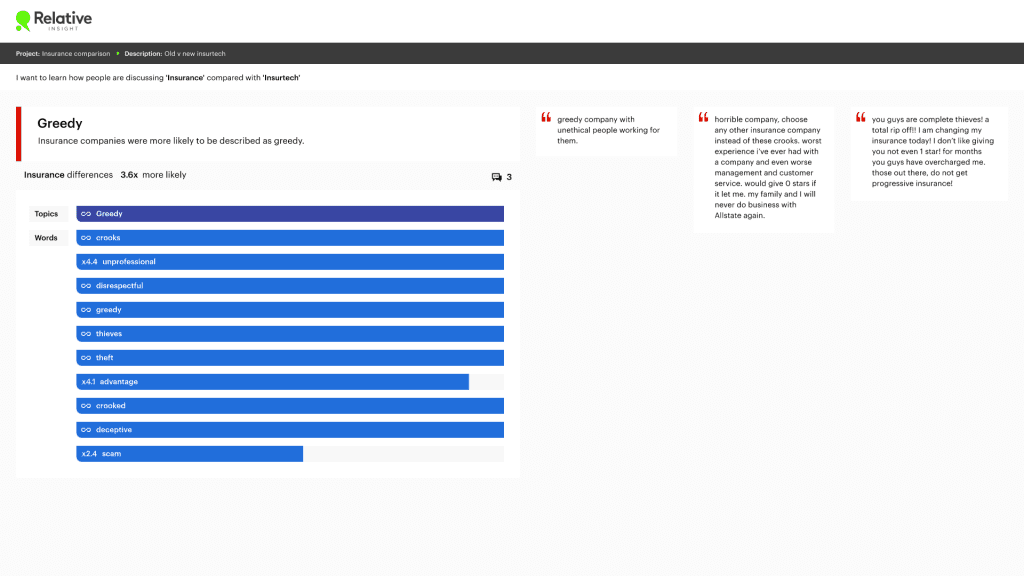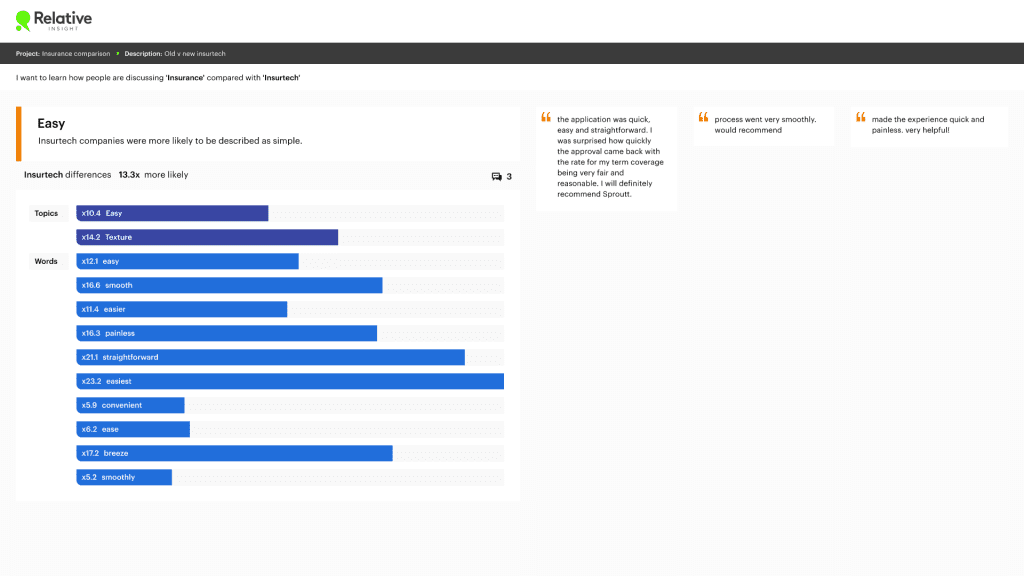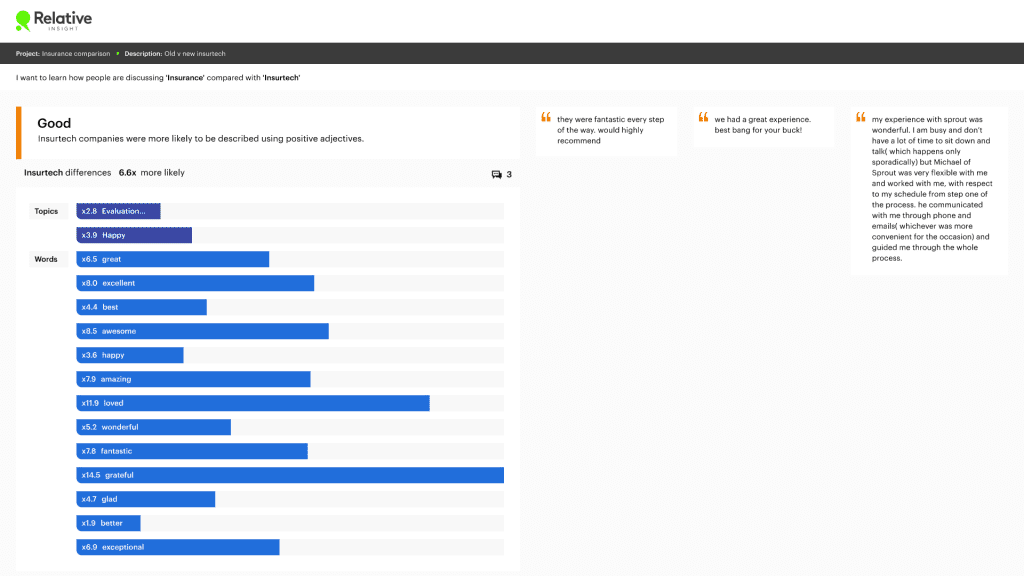Competitor analysis of insurance companies

In the golden age of tech, no industry can hide from the influence of innovation. Insurtech companies, as they’re called, have infiltrated one of the most stable and established industries there is – insurance.
New brands like Lemonade, Sproutt, Policygenius and Ladder are taking on established leaders including Allstate, State Farm, GEICO, Nationwide and Progressive. But is newer always better? Let’s conduct a competitor analysis of insurance companies.
Brands use Relative Insight to better understand the market landscape and compare competitors. To understand how these newer entrants compare to their legacy counterparts we turned to competitor analysis. By comparing consumer reviewers from websites including TrustPilot and Consumer Affairs, we uncovered the differences in how customers rate their experience with insurtech companies and traditional insurance brands. This form of customer needs research will demonstrate what consumers value from their insurance brands and how these companies are addressing those priorities.
Relative Insight compares two or more text data sets to discover the differences in words, phrases, grammar, topic and emotion. This form of comparative text analytics generates consumer and market insights by revealing what makes a brand or audience unique.
Traditional insurance providers
Reviews for traditional insurance brands were, well, not good. These companies were characterized as evil, money hungry liars (not my words). Reviewers used words like thieves, greedy, dishonest and lying to discuss their experience with top insurance companies. Many reviews didn’t include specific justification or explanation, only claiming generally deceptive prices and practices.

Insurtech companies
Reviews for newer tech-centric insurance companies praised services and employees for being fast and easy. Our competitor analysis of insurance companies discovered statistically significant use of words like quick, efficient, timely, easy, convenient and straightforward. Customer needs research tells us that consumers crave simplicity in the often complex world of insurance.

Employees of insurtech companies were also described as helpful, knowledgeable, professional, polite and informative. Reviewers were more likely to name specific representatives, which we observed through the use of first names like James, Chris, Alex, Josh, Patrick and Brandon. These newer brands are placing larger emphasis on human interaction and customer experience as demonstrated through consumer needs research.
Reviews for insurtech companies were overwhelmingly positive… suspiciously so. We can’t confirm or deny the authenticity of these reviewers, but we are apprehensive. Reviewers often referred to brands as this company instead of the specific company name, and frequently used oddly enthusiastic words like wonderful, exceptional, fantastic, excellent, amazing and awesome. While the magnitude of the differences in this instance are large enough to have confidence that the insurtech companies are really on to something here, this highlights the importance of taking a critical look at the composition of your data before performing analysis.

Using competitor analysis to compare competitors allows us to understand brand strengths and weaknesses in the eyes of the consumer. Customer needs research can help legacy players understand how they are perceived by customers and create innovation strategies to remain relevant in the digital economy.
Our competitor analysis of insurance companies revealed that Insurtech companies have disrupted the market by delivering simplicity to a traditionally complex and opaque industry – and customers love them for it. This information can help them double down on the things that have been helping them to win the hearts and minds of customers.
